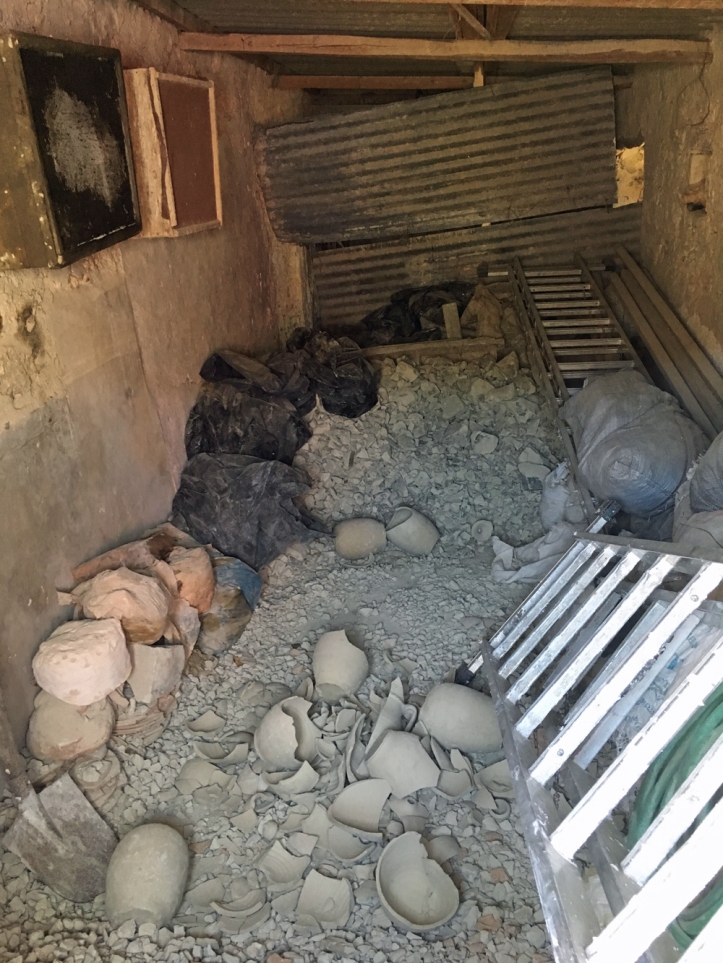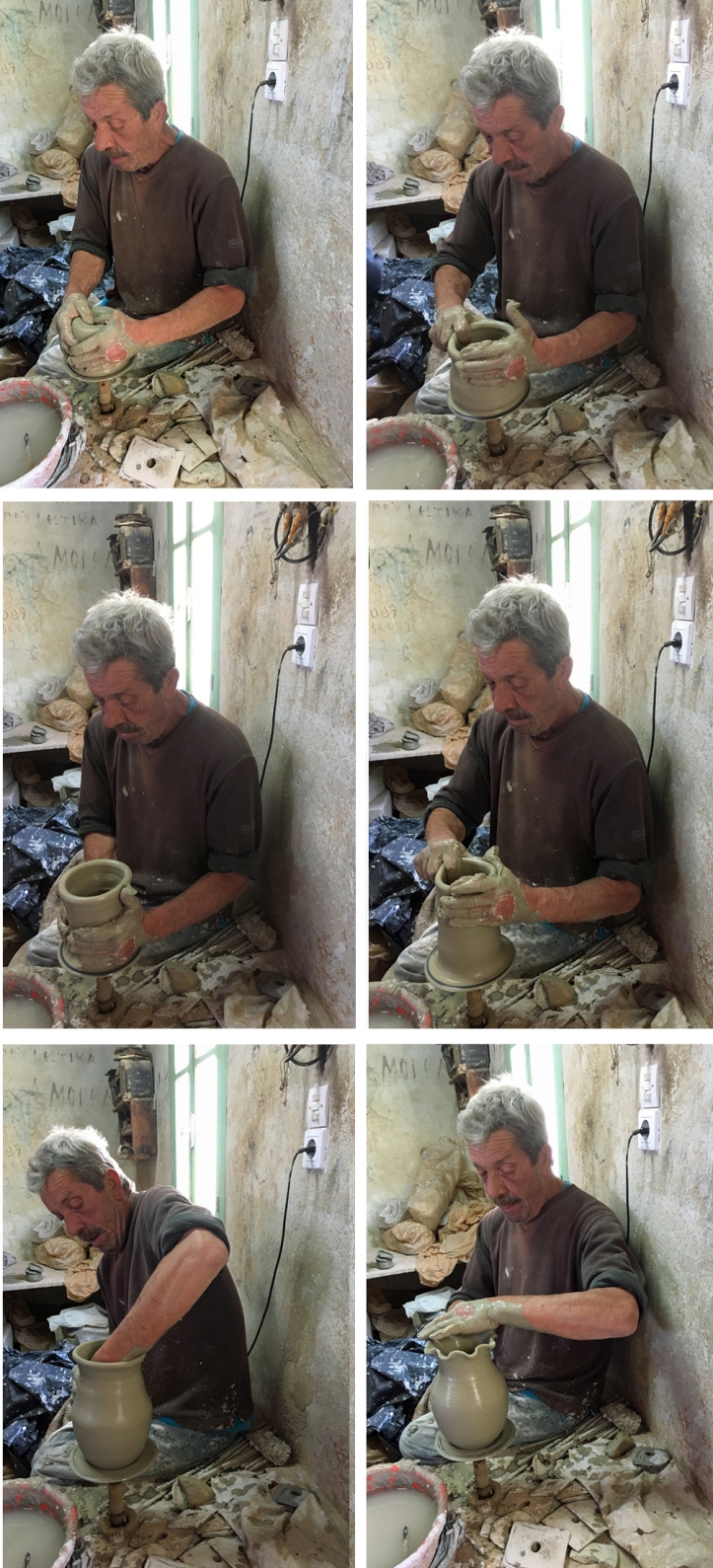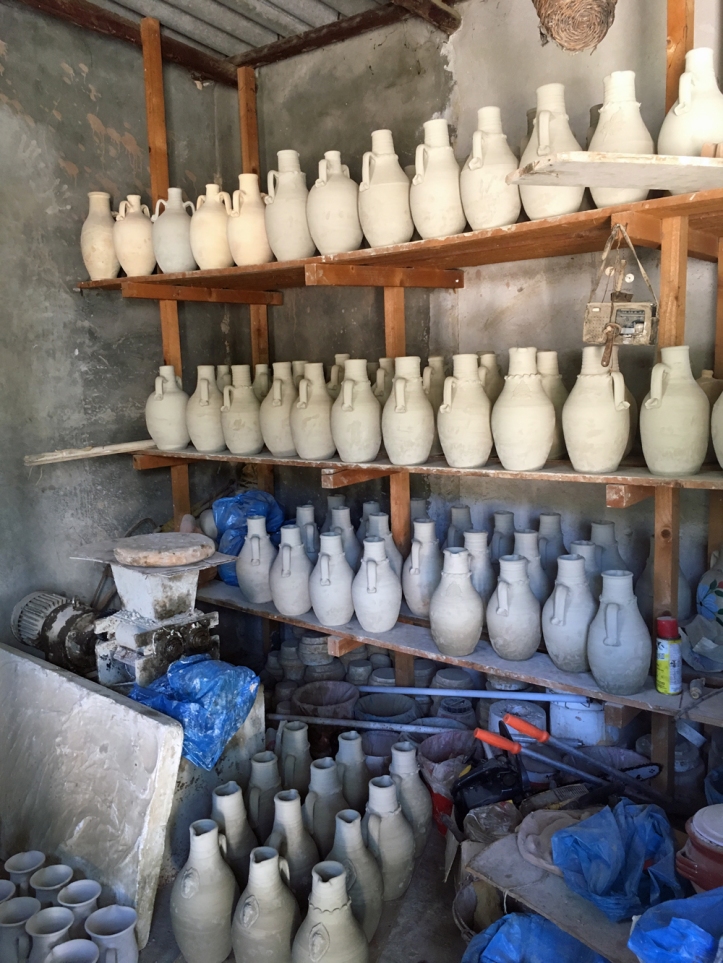When I first saw the Daily Post’s weekly Photo Challenge to photograph something that meant heritage, I groaned. Here I am in Greece absolutely surrounded by markers of heritage – definitely heritage overload. So, what to choose?
Lucky for me that I was with a group of people this past weekend looking at clay sources and traditional pottery production on the island of Aegina – only a one and quarter hour ferry ride from Athens. This is a worthy subject for heritage. There are many very good artisan potters on Aegina, but sadly only one now that actually sources and mines his own local clay.
We first visited the source of the clay: a clay quarry – mined out of what are referred to as “caves” in the hillside. It is deemed to be a dangerous task only to be attempted by those with specialised skills.
The potter processes the raw clay by breaking it down and levigating it on his premises outside a small village in the north of the island. Even some unfired pots get re-cycled if they don’t make the grade.
All his pots are made on his wheel in his workshop.
The pots are left to dry – first in the sun and then in on the shelves in his workshop. These are traditional water jar shapes from Aegina.
He then fires these pots in his own handmade kiln amidst free-range chickens in his back yard.
It is part of a wide range of cultural heritage to be found in Greece. But, it is also a dying art – making traditional pottery from the raw source to the finished product.
Heritage: The Daily Post’s Weekly Photo Challenge






Great image of the potter.
LikeLike
He is a fascinating person – hardworking, creative, so un-self conscious and willing to share his experience with us. We had a wonderful and unique day.
LikeLiked by 1 person
I almost envy the naturalness and simplicity of the lifestyle : the ability to live one with nature and create from it sufficient for one’s needs . . .
LikeLike
Despite being satisfying to create your own pots from source to finish, it is a hard life. His father and grandfather were also potters, so bred in the bone.
LikeLike
This is great! I will share it with the students …
LikeLike
Good idea! Really like your blog – very creative and very Ruth!
LikeLike
[…] Clay & Pots – My Kitchen Witch […]
LikeLike
Traditional handcrafts are being lost worldwide sadly. Nothing made by mechanical means can replace their beauty or nuance though. Does he have a son to follow the family tradition? Love this Deb
LikeLike
Sadly, there is no son or daughter to carry on the tradition. Ironically, we were discussing the demise of the traditional village tailor and cobbler (here in Greece) who hand made clothing and shoes/boots in the early part of the 20th century. It was largely due to the massive influx of Singer sewing machines and their distribution by aide workers around the time of the Balkan Wars. However, traditional handwoven goods are becoming fashionable again – so traditionally made pots might as well have a revival.
LikeLike
Here’s hoping ..
LikeLiked by 2 people
Very nice. I took a pottery class years ago and found out those who produce beautiful items like these are true craftsmen because it is a lot harder than it looks. 🙂
LikeLike
And yet, he made it look do easy! A mark of a true craftsman.
LikeLiked by 1 person